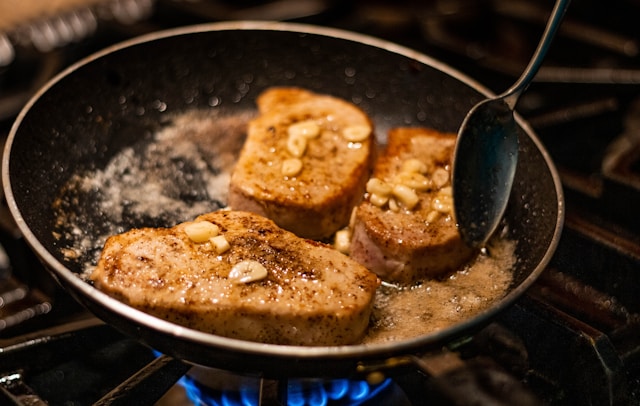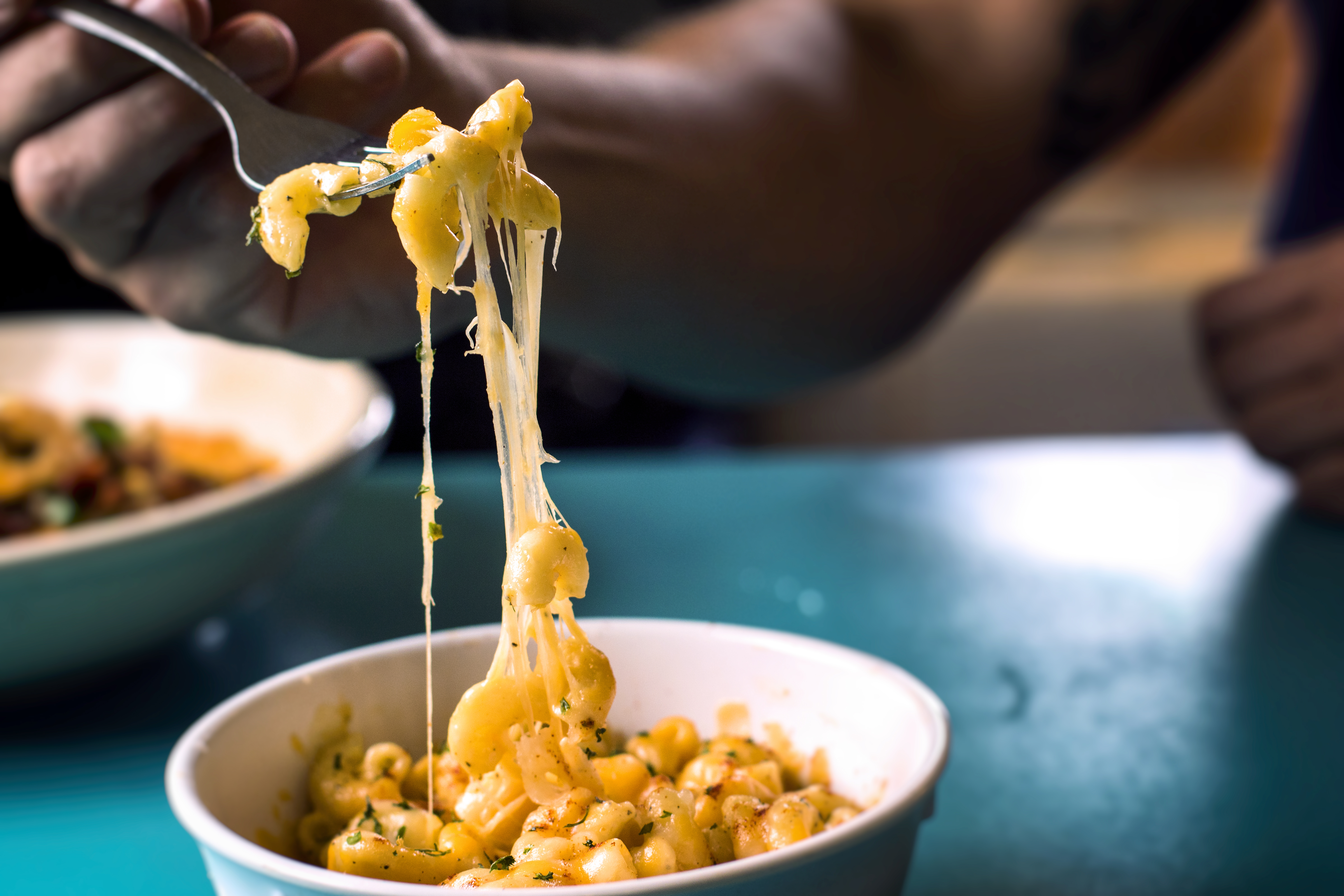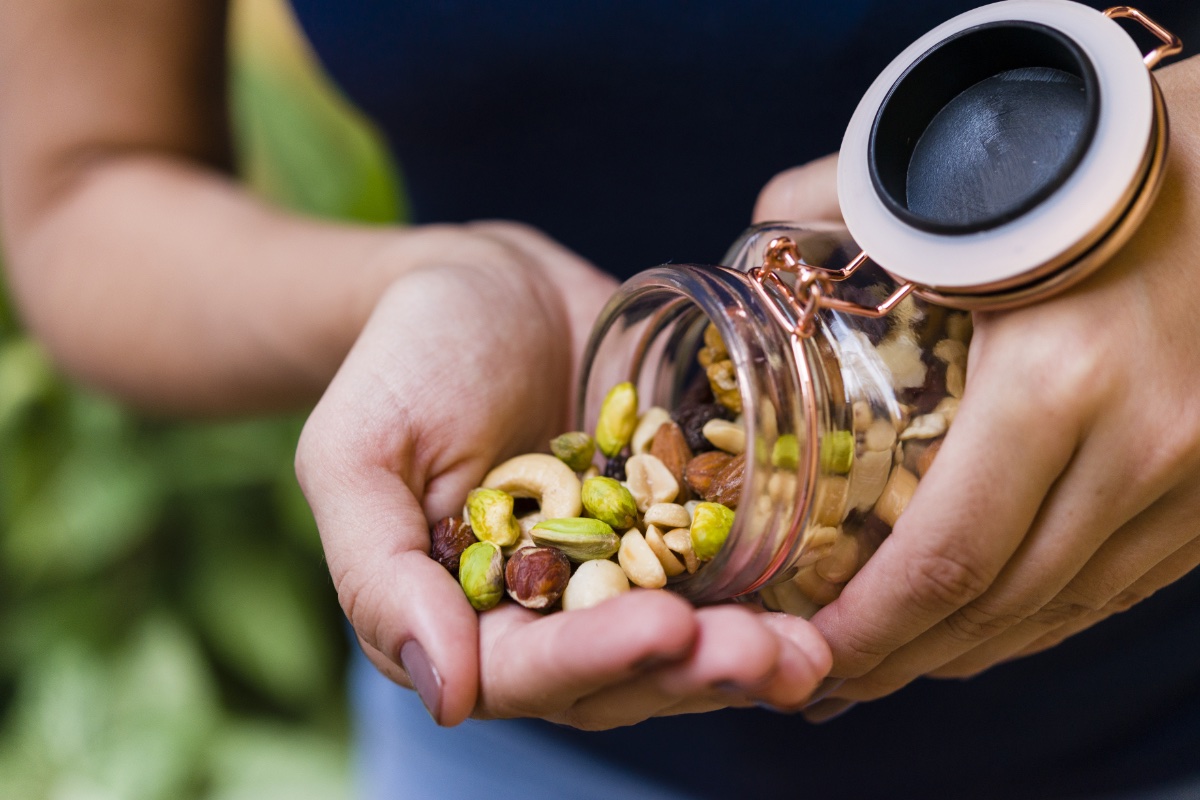We rely on sautéeing when we want to quickly cook some cut-up chicken, a pan of greens, or shrimp. But when the item you want to cook is larger — think a thick, juicy pork chop or fish fillet, a slab of tofu, or larger vegetable like cauliflower — you need to adjust your cooking method. In this scenario, pan-frying is the answer.
Pan-frying, also known as shallow-frying, is a cooking technique that is essentially the middle ground between sautéeing and deep-frying. When you sauté, you cook cut-up protein and/or vegetables over high heat with minimal oil while stirring the food in the pan. When you deep-fry, the food is completely submerged in oil.
Pan-frying calls for adding enough oil to fill the pan by a quarter or almost halfway, then cooking your food over medium heat. The food is often portioned in larger pieces, and you don’t stir while pan-frying like you do when you sauté.
Photo by Yvette S
What are the best foods to pan-fry?
Foods best for pan-frying are those that cook fairly quickly and are ideal to serve as a single portion. Think fish, scallops, crab cakes, pork chops, chicken, veal, and cutlets, such as schnitzel. Potatoes are also great candidates for pan-frying if you are looking for a way to get a crisp exterior on the potato without deep-frying.
Pan-frying is how you cook meat cutlets for schnitzel. After breading the cutlets, heat between 1/4 and 1/2 inch of oil in the pan and pan-fry them until they are golden and crispy. Pan-frying is also an ideal method for cooking dumplings. The flat portion of the dumplings is pan-fried in oil until a crisp crust forms, then liquid is added to steam the dumplings until they are cooked through. This method creates a beautiful browned bottom and soft top for an ideal texture without deep-frying.
How do you pan-fry?
Pan-frying only requires three things: a heavy-bottom skillet, your food, and oil. However, it’s important that each of these three elements are prepped or ideal for pan-frying.
First, prepare your food by patting it dry and seasoning it. Next, pick a heavy-bottomed pan. You’ll want a heavy-bottom skillet that can comfortably hold your food and oil at a consistent temperature — we usually choose cast-iron or a good-quality stainless steel skillet. Then, add oil to the pan and heat it over medium until it reaches your desired temperature; you can test the temperature by placing part of a piece of food in the pan and seeing if it sizzles. You want just enough oil to come up the sides of the food so it doesn’t catch on the bottom of the pan, but not so much that it is submerged in oil. When the oil is hot, add your food to the pan and cook until it gets a browned crust. Flip and continue cooking to desired doneness.
What is the best oil for pan-frying?
Depending on the temperature you’re cooking your food, you’ll want to pick an oil or fat that won’t burn. We recommend a high-heat oil, such as avocado, grapeseed, or other vegetable oil. You can add butter to the pan, but since butter burns at 350°F, it’s best to mix it with a high-heat oil so you can get that butter flavor while maintaining the high heat.
What are the best pans to use to pan-fry?
Since you are cooking your food over medium heat at a temperature anywhere from 325°F to 400°F for an extended period of time, it’s best to use a heavy-bottomed pan or skillet to pan-fry. Our tried-and-true favorite for pan-frying is a cast-iron pan because of its uniform heat distribution across the surface of the pan and its ability to hold a consistent temperature. Pan-frying is also ideal in any low or high-sided heavy duty heavy-bottomed skillet, or a stainless steel skillet.
This article was written by Breana Lai Killeen, RD, M.P.H from Food & Wine and was legally licensed through the DiveMarketplace by Industry Dive. Please direct all licensing questions to legal@industrydive.com.








